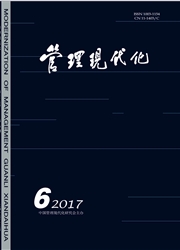

 中文摘要:
中文摘要:
中哈贸易畅通是“一带一路”互联互通战略的重要组成部分,自贸区是中哈合作模式升级的必然选择。文章从经济效应动态模拟的角度出发,探究阻碍中哈自贸区建设的深层次原因及两国的策略选择。基于阿明顿假设并结合世界表相关数据,测算了三种情况下6类产品的替代弹性,并根据局部均衡模型模拟分析了2011年与2014年两个时点、互减关税与互为零关税两种情形下中哈双边的贸易效应、福利效应及关税效应。结果显示:我国进口商品的Armington替代弹性整体为1.851,高于哈萨克斯坦的1.144;两时点的模拟结果大体一致;减税与零关税条件下,两国进口贸易规模均明显扩大,福利显著改进;哈从其他国家的部分进口将转移至中国,其国内运输设备、消费品等制造业将受到较大冲击;推进自贸区,中国的最优关税策略是直接实行零关税。哈国是逐步减税。
 英文摘要:
英文摘要:
Trade liberalization of Sino - Kazakhstan is one of the most important part in "One Belt One Road" Connectivity strategy and FTA is an inevitable choice to upgrade Sino - Kazakhstan cooperation model. From the angle of economic effect dynamic simulation, this article has studied the further reason that impeded the construction of Sino - Kazakhstan FFA and strategic choices of these two countries. Based on Armington assumptions and with data from world table, this paper has estimated the elasticity of 6 kinds of products of China and Kazakhstan under three circumstance, and then simulated the trade effect, welfare effect and tariff effect of trade liberalization with partial equilibrium model under tax cut and zero tax situations and 2011,2014 time -points. Results show: Armington elasticity of Chinese im- ported goods is 1.851, which is overall higher than Kazakhstan' s 1. 144; Simulation results of 2011 and 2014 is unanimous in general; Under both circumstance of tax cutting and zero tax rate, trade scale ofthese two countries has enlarged and welfare has improved a lot ; Meanwhile, part of Kazakhstan' s impor- tation from other countries will move to China, and its domestic manufacturing, such as transport equip- ment, parts, accessories and consumer goods, will suffer a lot. Promoting FTA, best tariff strategy of China is zero tariff rate and that of Kazakhstan is cutting down tariff rate gradually.
 同期刊论文项目
同期刊论文项目
 同项目期刊论文
同项目期刊论文
 期刊信息
期刊信息
